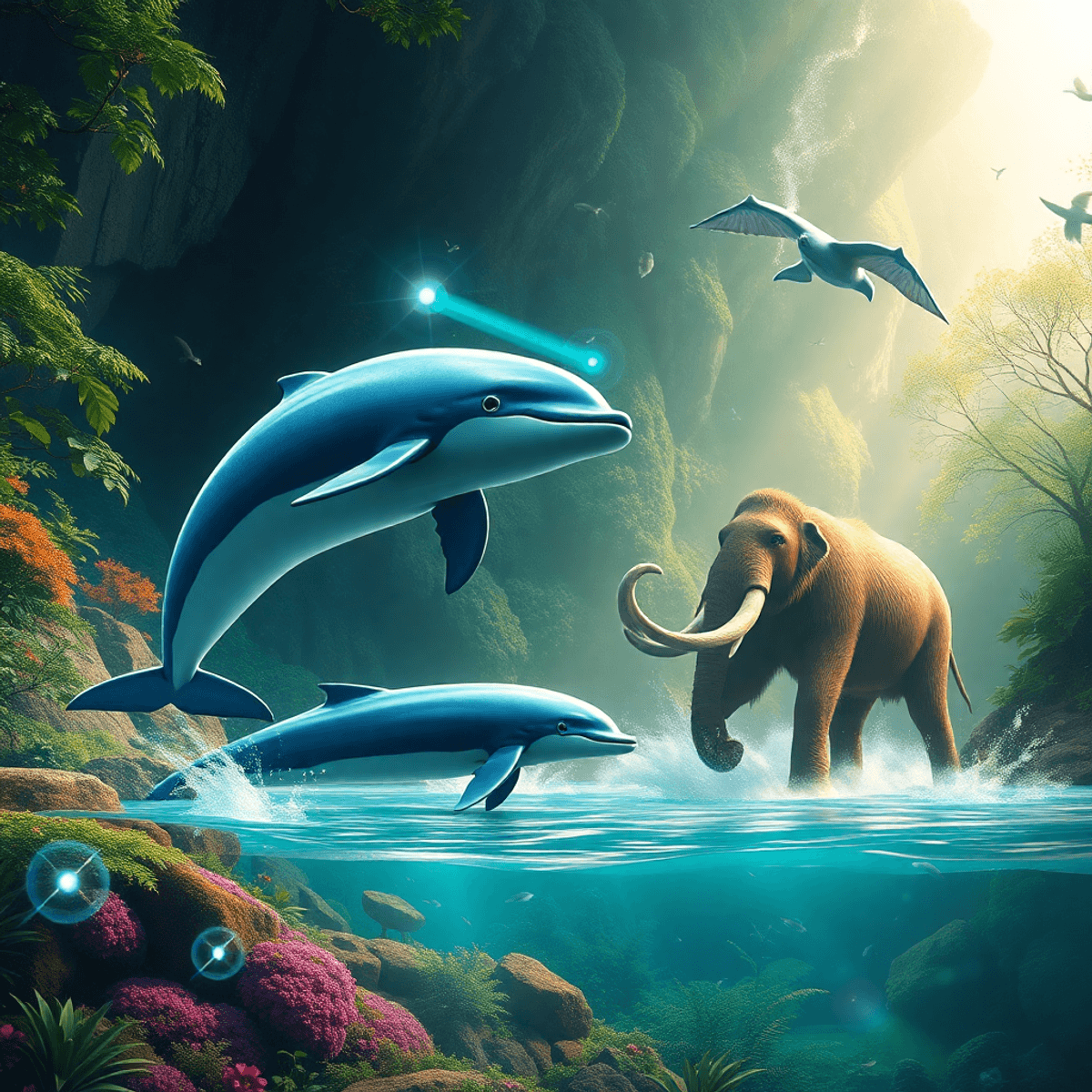
Lenovo and the Shanghai Natural History Museum have teamed up to bring Earth’s incredible creatures to life using virtual reality (VR) and artificial intelligence (AI). This partnership is an important step in combining advanced technology with cultural heritage.
The digital exhibition, titled “Awakening Earth’s Majestic Creatures with AI,” features three iconic species: the Yangtze River Baiji dolphin, the fin whale, and the mammoth. Each of these magnificent beings has a story that resonates deeply, making their digital resurrection not just an educational experience but also an emotional journey for visitors.
Why is this important? The use of technology in preserving biodiversity is crucial. By creating lifelike depictions of these creatures, Lenovo’s innovative approach highlights their significance in understanding our planet’s ecosystems.
This exhibition invites audiences to engage with history and nature like never before. It serves as a reminder of what we stand to lose if we don’t act now.
Lenovo and the Shanghai Natural History Museum are working together to bring back three amazing species:
These iconic animals are important for understanding biodiversity. They indicate how healthy the environment is and show us the delicate balance of ecosystems. Their stories also highlight the urgent need for conservation efforts.
Qiqi the Baiji dolphin was more than just a marine mammal; he represented hope. Captured in 1980, Qiqi became a spokesperson for his critically endangered species. His death on July 14, 2002, marked a significant moment in raising awareness about conservation. The Baiji dolphin is now on the verge of extinction, with fewer than 100 individuals remaining in the wild.
The stranded fin whale, discovered on March 20, 2017, tells another powerful story. This magnificent creature’s unusual location caught public attention and sparked interest in marine conservation. Its skeleton, now displayed at the museum, narrates a tale of both wonder and urgency.
Reviving these iconic species through digital means helps us connect with our planet’s fragile ecosystems on a deeper level. Each story highlights the importance of biodiversity and motivates visitors to participate in preservation efforts.
The “Awakening Earth’s Majestic Creatures with AI” exhibition transforms the museum space into an interactive landscape. Visitors step into meticulously designed environments that reflect the natural habitats of the featured species.
The exhibition serves as a powerful tool for education, inspiring curiosity about marine life and conservation efforts. By merging technology with storytelling, Lenovo and the Shanghai Natural History Museum create a platform for visitors to connect emotionally with Earth’s extraordinary creatures.
Artificial Intelligence is reshaping museum experiences. At the forefront, Lenovo and the Shanghai Natural History Museum leverage AI-generated content (AIGC technology) to craft lifelike interactions with history.
Lenovo’s proprietary AIGC technology stands out. It processes vast datasets swiftly, enabling high-quality 3D models and interactive experiences. This innovation preserves not only the physical attributes of species like the Baiji dolphin and fin whale but also enriches their narratives.
AI’s potential to revolutionize museums is significant. It shifts passive viewing into active learning:
This integration of spatial computing and AI demonstrates a bold step forward in cultural preservation, redefining how we interact with our planet’s legacy.
The exhibition unfolds through three distinct thematic sections, each highlighting a magnificent creature:
This section immerses visitors in the world of the Baiji dolphin. Through interactive displays, guests can explore the Yangtze River’s ecosystem, understanding the delicate balance of freshwater habitats. Animated narratives bring Qiqi’s story to life, emphasizing the urgency of conservation efforts.
The fin whale exhibit takes guests on a virtual dive into the ocean depths. Visitors can swim alongside this colossal mammal, uncovering its migration patterns and feeding behaviors. Real-time data visualization showcases the whale’s interactions with its environment, fostering a deeper understanding of marine biology.
Here, the woolly mammoth comes alive in a chilling recreation of its prehistoric habitat. Engaging activities allow visitors to piece together ecological dynamics that sustained these giants. By examining artifacts and specimens, audiences gain insights into climatic changes and their effects on biodiversity.
Each theme captivates visitors while educating them about marine mammals and extinct creatures, creating an unforgettable learning experience.
This exhibition serves as a powerful platform for endangered species awareness. Through immersive experiences, visitors confront the realities faced by iconic creatures like the Baiji dolphin and fin whale. Each interaction encourages deeper understanding of their vulnerabilities.
Technology plays a crucial role in global conservation initiatives. It can enhance data collection, improve habitat monitoring, and facilitate community engagement.
Visitors are urged to extend their experience beyond the museum walls. Engaging with local conservation projects or advocating for policy changes amplifies their impact. Together, we can drive meaningful change in biodiversity conservation efforts.
Lenovo’s innovation in museums redefines engagement. The collaboration with the Shanghai Natural History Museum brings Earth’s majestic creatures to life with VR and AI, digitally resurrecting three iconic species.
This exhibition serves as a catalyst for change, inspiring new generations to appreciate and protect biodiversity.
As visitors immerse themselves in these lifelike experiences, they become empowered advocates for the planet. The future of digital exhibitions lies in their ability to educate and inspire action.


